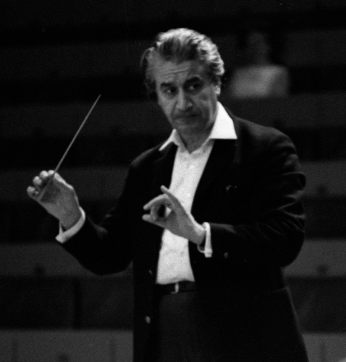November 2025 marks a defining moment for Romania’s cultural scene, as two large-scale projects celebrate one of the country’s greatest musical figures, conductor Sergiu Celibidache.
A historic musical revival on air
Radio România Muzical has begun airing the complete series of eight concerts that Celibidache conducted in Romania between 1970 and 1990. Starting November 13, each Thursday and Friday at 15:30, listeners can rediscover performances ranging from his appearances with the Stockholm Radio Orchestra in 1970 to the Munich Philharmonic’s concert in Bucharest in February 1990.
The program brings to life rare archival recordings that trace Celibidache’s complex artistic evolution and his profound influence on orchestral interpretation. For many listeners, these broadcasts are not only a musical experience but also a moment of national reflection on one of Romania’s most important artistic legacies.
A cinematic tribute: The Yellow Tie
In parallel, Romanian cinemas are preparing to release The Yellow Tie, a feature film directed by Celibidache’s son, Serge Ioan Celebidachi, with John Malkovich portraying the legendary conductor. Opening nationwide on November 14, the film explores Celibidache’s extraordinary life journey, from his early years in Romania to his rise as an international icon of classical music.
With an estimated EUR 20 million budget, The Yellow Tie is among the most ambitious Romanian film productions in recent years. It brings together an international cast, including Sean Bean, and aims to bridge the gap between local storytelling and global cinematic appeal. The project also signals growing confidence in Romania’s ability to deliver high-production-value films for both domestic and international audiences.
Cultural heritage meets modern media
The simultaneous release of the concert series and the film illustrates Romania’s growing commitment to transforming its cultural heritage into a global narrative asset. For Radio România Muzical, the Celibidache broadcasts not only revive a vital part of musical history but also present a fresh opportunity to attract younger audiences to classical music.
Meanwhile, the cinematic adaptation brings the conductor’s philosophy and human complexity to life for a new generation. It also positions the Romanian film industry at the forefront of a shift toward heritage-driven, internationally marketable productions — an approach increasingly embraced across Europe.




